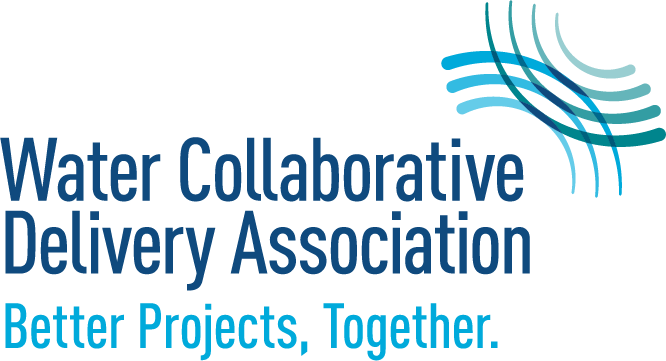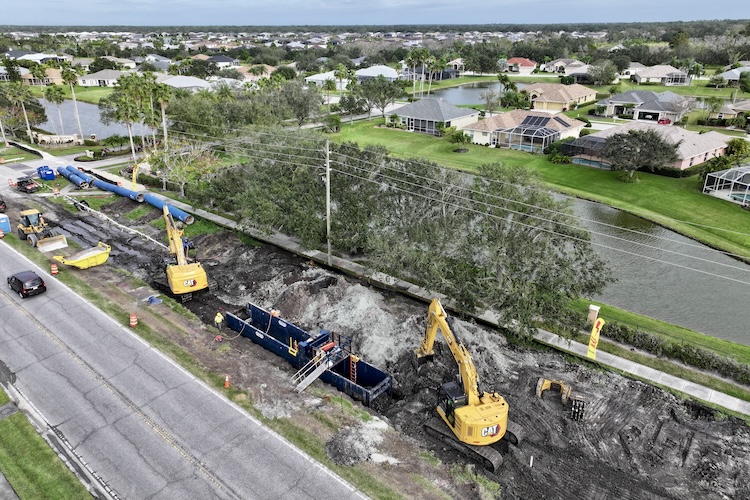As water/wastewater infrastructure becomes more complex and densely arranged, underground utility installation presents opportunities for innovation and efficiency. Existing below-grade infrastructure is a major cost driver for new utility projects, as it poses risks to excavation, dictates the depth of new installations, and can slow down pipeline construction operations. While geographical information systems (GIS) and as-built documents are commonly used to estimate utility locations, they often suffer from inaccuracies, changes over time, and the complexity of utility networks, limiting their reliability.
Advanced verification methods like subsurface utility exploration (SUE), which uses techniques like vacuum excavation, potholing, and ground-penetrating radar (GPR), enhance utility mapping precision by pinpointing the location, depth, and type of utilities with greater reliability than traditional methods. While embracing advanced technologies and processes in the field is beneficial, involving the contractor early through collaborative delivery further optimizes efforts.
Leveraging SUE during Preconstruction
SUE has been effectively employed in the design phase of underground projects since the technology first emerged several decades ago. However, its true potential is realized when integrated during preconstruction, particularly with early contractor involvement. This approach is crucial for accurately locating utilities and understanding their impact on a pipeline or structure’s final design and installation costs. Addressing conflicts in the field that could have been avoided with early identification is often far more expensive than conducting SUE efforts. Costs and schedule risks escalate if the team must wait for solutions or materials, with these challenges increasing as project complexity grows.
Because collaborative delivery allows the contractor to engage early during preconstruction, the SUE process can be managed even more effectively. The contractor can guide alignment and design decisions, allocate resources efficiently, and identify critical areas for investigation. As a result, the project benefits from smoother execution and long-term savings.
The Value of Investing in an SUE Budget
Effective utility project planning involves allocating an appropriate budget for utility verification. While focusing on keeping initial project costs low is common, investing in a comprehensive SUE effort can provide significant long-term benefits. GIS and as-built documents offer initial estimates, but SUE delivers a more accurate and detailed understanding of utility locations. By integrating contractors early in the process, they can advocate for a realistic SUE budget, enhance utility mapping, improve relocation planning, and refine as-built documents. Addressing utility locations through thorough investigation, surveying, and documentation before construction begins allows contractors to help prevent substantial costs and risks during construction.
Collaborative Delivery and SUE in Action: Peace River Regional Integrated Loop Phase 3C Pipeline
Managing Pipeline Relocation Costs: Relocating a transmission main to accommodate existing utilities can be costly, especially with larger pipes. For example, adjusting a pressure pipe often requires extra fittings, and shifting a gravity main could mean adding manholes. The larger the pipe, the higher the cost.
The installation of a pre-engineered 42-inch spiral welded steel main could have required significant modifications if utility conflicts arose during installation. By prioritizing SUE in preconstruction for this progressive design-build project in Sarasota, Florida, Garney identified multiple discrepancies between existing utilities and the as-built documents. This proactive approach helped avoid costly changes and kept the project on track.
Improving Utility Relocation: GPR and potholing were used to locate a parallel 16-inch reclaim water main relative to the new 42-inch pipeline alignment. Initially, it was estimated that more than 4,700 linear feet (LF) of this reclaim water main would need to be relocated as an early phase of construction to accommodate the new pipeline. However, through an intensive SUE effort, the team discovered that only 2,200 linear feet required relocation, and the remaining portion of the reclaim main could be preserved with minor adjustments to the new steel pipeline alignment. A bore was also shifted in one area to avoid the complex relocation and reconnection of the reclaim line.
Significant Savings: These adjustments led to over $300,000 in construction savings, with preconstruction SUE costs amounting to less than 5% of that figure. Without this preconstruction effort, the impact would have been much greater, potentially involving delays, site relocations, modifications to the new steel line, and additional relocation costs. By avoiding these field changes and relocations, the project minimized potential disruptions to traffic and the surrounding community, ensuring a smoother and less intrusive construction process.
Conclusion
Project teams can minimize disruptions and safeguard assets by adopting advanced technologies and thorough verification methods. Proactively integrating these practices through the contractor during preconstruction helps mitigate current and future risks. Embracing these approaches enhances project outcomes and delivers long-term value by reducing uncertainties and protecting investments throughout the project’s life cycle. A well-executed SUE program, particularly when supported by a contractor in a collaborative delivery project, results in savings that far exceed its initial cost, demonstrating its value in offsetting construction expenses.

